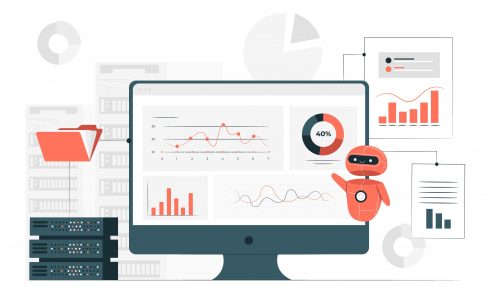From Physical To Digital: Transitioning Your Business In The Modern Age
6 Mins Read
Published on: 08 June 2023
Last Updated on: 09 November 2024

toc impalement
In an era characterised by rapid technological innovation, the need for businesses to transition from physical to digital operations is not just desirable—it’s crucial.
The dawn of the digital age has rewritten the rules of commerce and engagement, forcing businesses to adapt or risk becoming obsolete. This article seeks to guide you through this pivotal transformation, offering insights into the necessity of digital transformation, the power of digital marketing, challenges to anticipate, and essential digital tools. By the end, we hope to inspire confidence in the embrace of digital transformation, fostering a belief in its potential for long-term business success.
The Necessity of Digital Transformation in Today’s Business Landscape
The world has gone digital, and so must businesses. In a marketplace increasingly defined by immediacy, availability, and convenience, businesses that resist digital transformation risk becoming sidelined. Brick-and-mortar shops, whilst still valuable, cannot alone satisfy the 24/7 demand of contemporary consumers.
Adopting a digital business model facilitates expansive reach, allowing businesses to serve customers across the globe. In addition, digital platforms provide a wealth of data, granting insights into consumer behaviour and trends.
Businesses can leverage this data to optimise offerings, enhance customer satisfaction, and ultimately, increase profitability. Digital transformation is not just a fleeting trend—it’s the future of commerce.
Digital Marketing Strategies: Boosting Your Online Presence
A robust digital presence is key to visibility in the saturated online marketplace. Digital marketing, with its plethora of platforms and strategies, offers businesses unparalleled reach and engagement potential. Through social media, SEO, email marketing, content marketing, and pay-per-click advertising, businesses can target audiences with precision and deliver personalised messages.
Not only can these strategies attract new customers they can also enhance brand loyalty, turning customers into advocates. Furthermore, digital marketing provides a unique advantage—analytics.
With real-time feedback on campaign performance, businesses can quickly adapt strategies to maximise return on investment. Therefore, digital marketing isn’t simply a matter of boosting online presence—it’s a tool for sustained growth.
Challenges in Transitioning to a Digital Business Model and How to Overcome Them
Transitioning to a digital business model isn’t without its challenges. These may include resistance to change, lack of digital literacy, data security concerns, and cost of digital infrastructure. However, these challenges can be overcome with the right approach.
Clear communication of the benefits of digital transformation can dispel resistance, whilst comprehensive training can improve digital literacy. Additionally, implementing robust cybersecurity measures can address data security concerns. As for costs, it’s important to view digital infrastructure as an investment, not an expense.
In the long run, the efficiency and reach it enables often offset initial costs. Businesses that proactively address these challenges are likely to experience a smoother transition, reaping the myriad benefits of becoming a digital enterprise.
Essential Digital Tools for Your Business Transformation
To compete in the digital economy, it’s essential to arm your business with the right tools. These span a broad range from e-commerce platforms and project management software to Customer Relationship Management (CRM) systems and cloud storage solutions.
A notable tool that has grown in importance, especially for businesses engaged in international trade, is an online payment system. Silverbird, a reputable name in this sector, offers a UK multi-currency account which enables smooth transactions across borders.
Notably, Silverbird simplifies the process of converting currency, ensuring businesses receive a fair exchange rate and reducing the administrative burden. This is an excellent example of how businesses can leverage digital tools to streamline operations, optimise customer service, and enhance profitability. Ultimately, the right digital tools form the backbone of your digital business transformation.
The Role of Social Media in Digital Business
Social media has radically transformed how businesses engage with customers, playing a pivotal role in the transition to digital business. It provides a platform for businesses to showcase their brand personality, connect with customers on a personal level, and respond promptly to queries and feedback.
It also serves as an effective channel for product promotion and content sharing. Platforms such as Facebook, Instagram, LinkedIn, and Twitter allow businesses to reach their audience where they spend a significant portion of their time. More importantly, social media platforms provide analytics, enabling businesses to understand their audience better and fine-tune their strategies.
Coupled with paid advertising options, they offer the possibility of targeting specific demographics, hence maximising conversion rates. In the digital business landscape, effective use of social media is key to establishing a strong online presence and driving growth.
Staff Training and Development for a Digital Business Transition
Staff are the backbone of any business, and their role in a successful digital transition cannot be underestimated. As businesses shift to digital models, employees need to be equipped with new skills and competencies. This may encompass everything from data analysis and digital marketing to understanding how to manage a UK multi-currency account or navigate new project management software.
Here, a well-structured staff training and development programme is crucial. Such a programme should include a blend of theoretical knowledge and practical exercises, enabling staff to apply what they learn in real-world scenarios.
Importantly, training should be seen as an ongoing process, not a one-time event, as digital tools and strategies are continually evolving. Supporting your staff through this transition not only equips them for the challenges of the digital landscape but also demonstrates a commitment to their personal growth and job satisfaction.
Sustainability and the Digital Business: The Environmental Impact
The digital transition isn’t just good for business—it can also be beneficial for the environment. Traditional businesses often leave significant environmental footprints, from paper waste to energy consumption in physical stores. In contrast, digital businesses can drastically reduce such impact. Digital storage solutions, for example, eliminate the need for paper, reducing deforestation.
E-commerce reduces the carbon emissions associated with driving to physical stores. Furthermore, digital businesses are uniquely positioned to promote sustainability. They can easily share green initiatives with customers, encouraging eco-conscious behaviour.
However, it’s also important to be aware of the environmental impact of digital technologies themselves, like energy use in data centres, and strive to mitigate these. Overall, digital transformation, when executed mindfully, can contribute to the broader goal of sustainability.
Monitoring Your Digital Transformation: Key Metrics to Consider
The digital transformation journey is not one to embark upon blindly. To ensure you’re on the right track, it’s essential to measure your progress through key metrics or KPIs (Key Performance Indicators). This can include customer engagement metrics, like click-through rates, bounce rates, and social media engagement. For e-commerce businesses, sales conversion rates and average cart value are key.
If you’ve implemented a multi-currency account, the volume of international transactions can indicate the success of your global reach. Tracking these metrics will provide insights into what’s working and what needs refining. Remember, digital transformation is a process, not a destination. Regular monitoring and adjustments are necessary to ensure the ongoing success of your digital strategy.
Conclusion: Embracing Digital Transformation for Long-term Success
As we navigate through the modern age, the imperative for businesses to transition from physical to digital becomes increasingly apparent. The digital landscape presents an abundance of opportunities to reach a global audience, optimise operations, and boost profitability.
It’s a journey that requires foresight, adaptability, and an appetite for innovation. Businesses must equip themselves with the right digital tools, hone their digital marketing strategies, and invest in staff training and development. More than that, they need to monitor their progress closely, refining their strategies based on tangible metrics.
Embracing digital transformation is more than just surviving in the modern business landscape—it’s about thriving, unlocking new potentials, and securing long-term success. The future of business is digital, and there’s no better time to embark on this transformation journey than now.
Read Also:


















Comments Are Closed For This Article